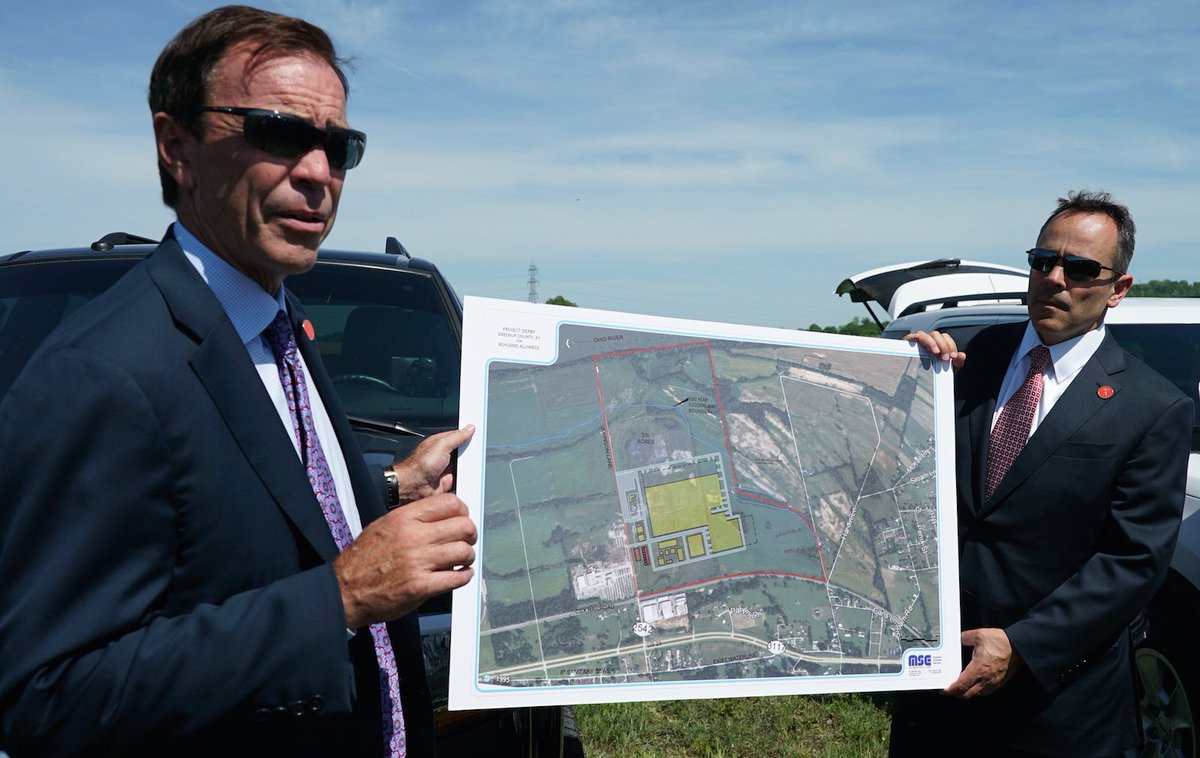Right To Work States Factory Job Growth Doubles Others
Since 2011, Right to Work States Outpaced Forced-Unionism States in Factory Job Growth, 2:1

Forced-unionism apologists insist the strong positive correlation between a state’s Right to Work status and its manufacturing employment growth is just a coincidence. But site-location decision makers like Craig Bouchard, CEO of Braidy Industries Inc. (left, pictured here with Kentucky Gov. Matt Bevin), know the correlation is no accident. Image: Light Metal Age
Today 28 states have Right to Work laws on the books protecting employees from termination for refusal to join or bankroll a union. Â Six years ago, just 22 states had a Right to Work statute and/or constitutional amendment on the books.
Since early 2012, grass-roots activists in six states — Indiana, Michigan, Wisconsin, West Virginia, Kentucky and Missouri — have, with the assistance of the National Right to Work Committee and its members, adopted new laws prohibiting compulsory union dues and fees. The Bluegrass and Show-Me States became Right to Work only this year.
It is largely thanks to the 1.63 million manufacturing payroll jobs located in Indiana, Michigan, Wisconsin and West Virginia last year that the total for all Right to Work states exceeded the total for all forced-unionism states by more than 200,000 in 2016. Â (See the first link below for more information.)
However, it is also notable that total manufacturing payroll employment for just the 22 states that already had Right to Work laws on the books as of 2011 increased by 5.9% over the next five years, according to data released by the U.S. Labor Department in March. That’s roughly double the aggregate percentage increase for the 24 states where compulsory union dues were still permitted in 2016.
And on average, cost of living-adjusted cash pay and benefits for factory-sector employees in Right to Work states are significantly higher than for their counterparts in forced-unionism states.
U.S. Commerce Department statistics, adjusted for regional cost-of-living differences according to an index calculated by the Missouri Economic Research and Information Center, show that in 2015 average annual compensation per Right to Work state manufacturing employee was $76,454. That’s roughly $3800 higher than the average for states that still lacked Right to Work protections in 2015.
Forced-unionism apologists insist the strong positive correlation between a state’s Right to Work status and its manufacturing employment growth is just a coincidence. But site-location decision makers like Craig Bouchard, CEO of Braidy Industries Inc., know the correlation is no accident.
On April 26, Bouchard held a joint press conference with Kentucky Gov. Matt Bevin to announce that Braidy would invest $1.3 billion to build an aluminum mill off U.S. 23, roughly 15 miles northwest of Ashland, Ky., in Greenup County. Â (See the second link below for a news account of the press conference.)
Construction will begin in 2018. When the plant is finished, it will hire 550 workers for jobs paying $38 an hour plus benefits.
In speaking to reporters, Bouchard bluntly stated that Kentucky’s adoption of the 27th state Right to Work law in January was a “make or break” factor in his company’s decision to locate in Greenup County. Without Right Work, he said, Kentucky “wouldn’t have been on the list.”
State and Area Employment, Hours, and Earnings : Multi-Screen Data …

